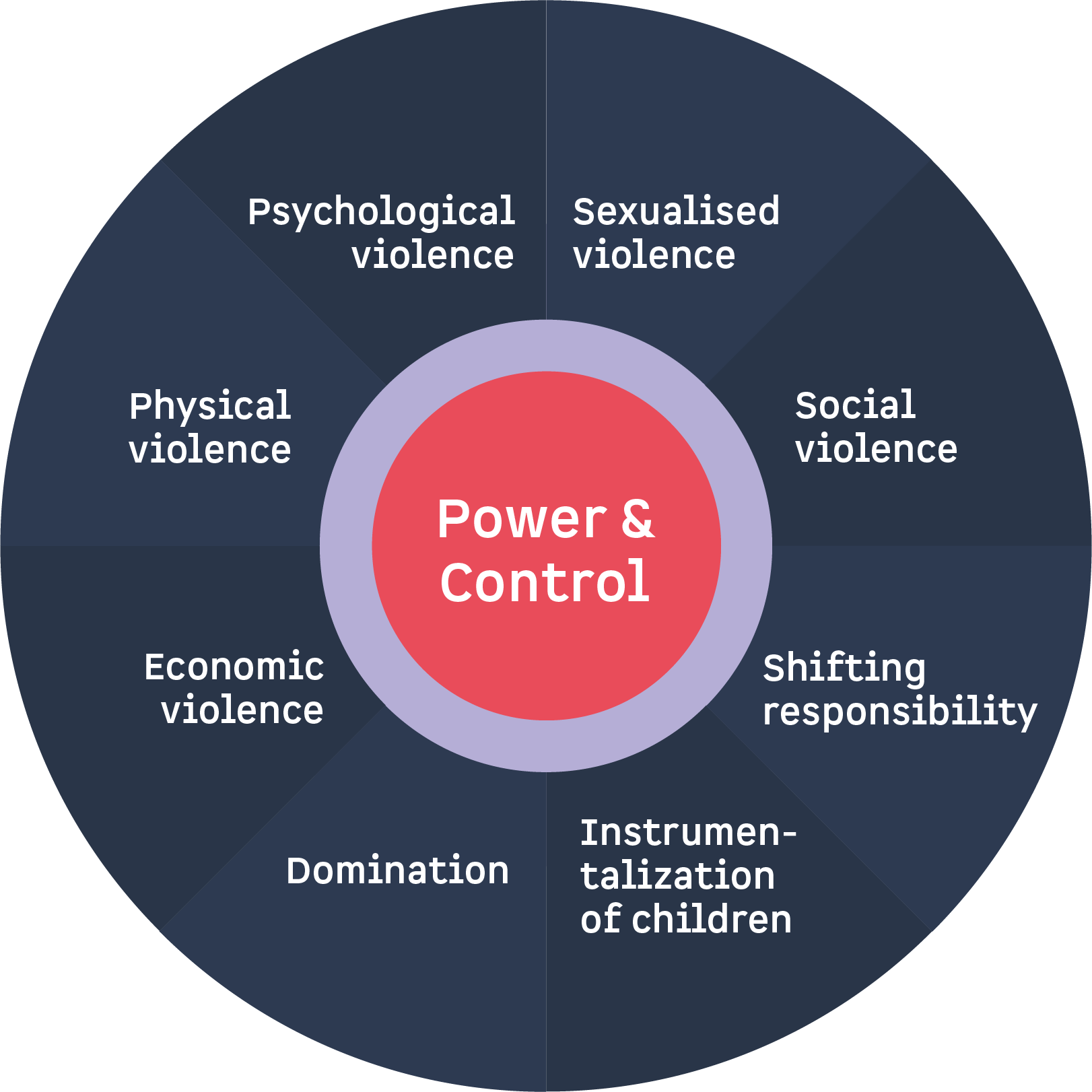What is domestic violence
The term domestic violence includes many forms of violence: When talking about domestic violence, it can mean physical violence, sexualized violence, psychological violence, social or economic violence.
Domestic violence can take very different forms: in addition to pushing, kicking or hitting, constant devaluation, humiliation or confinement, but also control and isolation are forms of domestic violence.
This term includes violence against children as well as violence against e.g., trans* people. Moreover, the violence does not necessarily have to take place at home. Rather, the term means that the violence comes from people who are actually close to us – i.e., from partners, but also from friends, acquaintances or parents.
People who are affected by racism or discriminated against because of a disability are additionally oppressed by domestic violence and at the same time are more frequently affected by domestic violence. This intersectional understanding of discrimination is important in the fight against domestic violence.
Gender roles, privileges and stereotypical assumptions in our society reinforce domestic violence. It is not a private matter, but a social, structural problem. Therefore, it is also understood as a violation of human rights and it is also the task of the state to fight against it.
The term domestic violence includes many forms of violence: When talking about domestic violence, it can mean physical violence, sexualized violence, psychological violence, social or economic violence.
Domestic violence can take very different forms: in addition to pushing, kicking or hitting, constant devaluation, humiliation or confinement, but also control and isolation are forms of domestic violence.
This term includes violence against children as well as violence against e.g., trans* people. Moreover, the violence does not necessarily have to take place at home. Rather, the term means that the violence comes from people who are actually close to us – i.e., from partners, but also from friends, acquaintances or parents.

Domestic Abuse Intervention Project, 1983, modifizierte Darstellung durch CORA 2017
Slaps, punches, kicks, choking, abuse with objects, burns, gunshot wounds, knife wounds…
Destruction of self-esteem, threats (e.g. with death, with abduction of children, with suicide), blackmail, psychological terror, constant control, stalk, persecution, denial of recognition, insult, humiliation, “crazy”;, withdrawal/withdrawal of love (until the desired behavior is achieved)
any violation of the sexual self-determination, even within partnerships, includes sexualized, condescending and humiliating comments, forcing sexual acts (intimate touching, kissing, etc.) or certain sexual practices, as well as rape
Reasons for the violence are not sought by the offender in themselves, but in externalcircumstances (e.g. alcohol consumption, difficulties at work) or the partner (“they provoked me”) the fault of the others.
Threat of violence against children and other family members, taking children hostage, using children as messengers in the event of separation/divorce and to establish contact with the ex-partner
Increase dependence on the partner; exploit one’s own advantages, existing inequalities, better position/status (disability, Residence status, woman-man, state of health, care situation…)
Deprivation of income or maintenance, sole access and control of the offender over joint income, accumulating debts and passing them on to others
